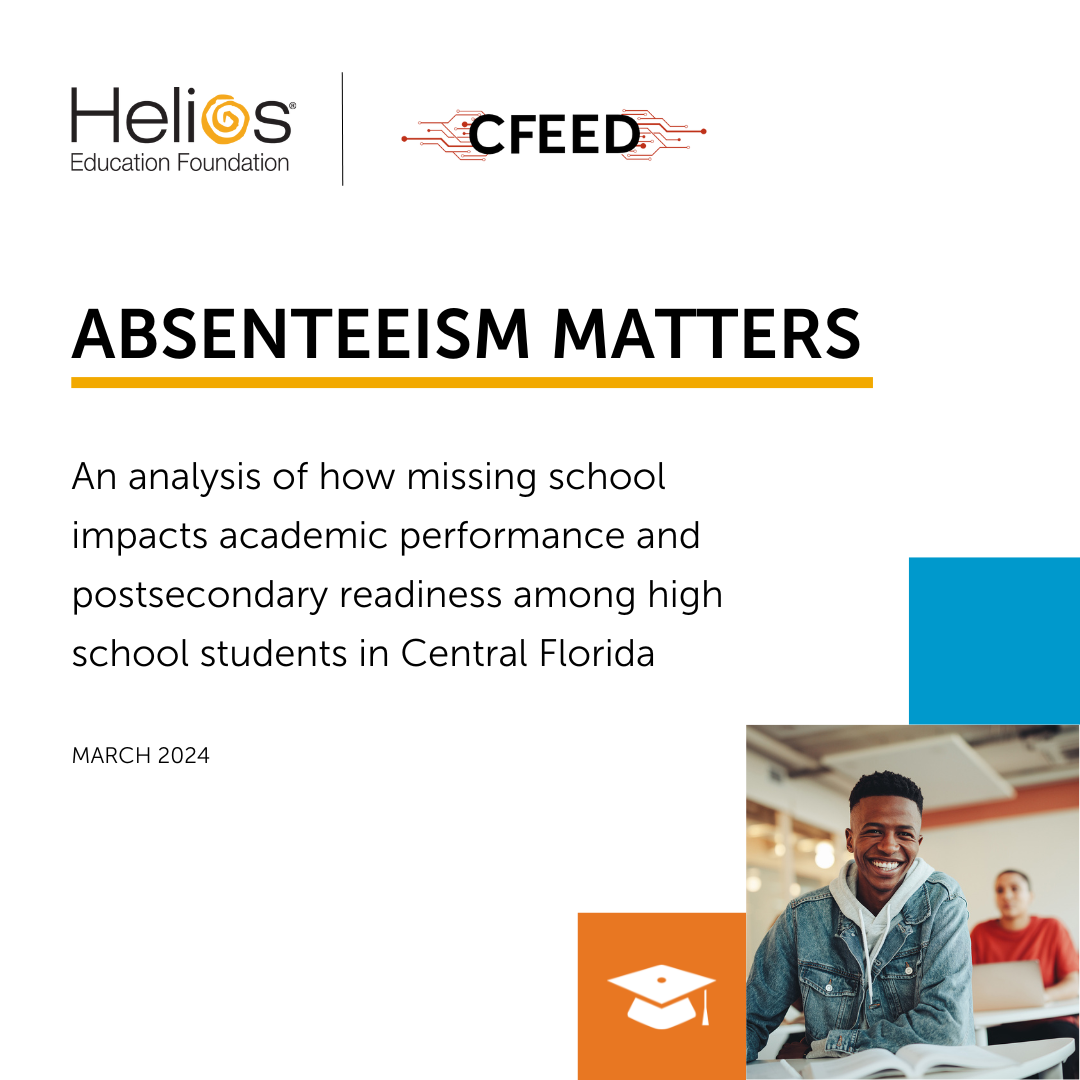Beyond the absences: Understanding chronic absenteeism's role in learning disruption
Every student's journey is unique and full of potential. Yet, there are obstacles, often beyond their control, that stand in the way of their academic success.
The COVID-19 pandemic was not only a health crisis, but a profound disruptor of education, revealing and deepening the disparities that affect our most vulnerable students' access to education. Schools closed, learning went remote, and the digital divide widened, leaving many students — particularly those from, Black, Latino, and low-income backgrounds — in a precarious position.
And now, as we have reached the other side of the pandemic to resume a new normal, a new threat exists that will have a multiplying impact to student learning, academic achievement, and postsecondary readiness. This threat is chronic absenteeism.
Helios Education Foundation was one of the first to sound the alarm about the growing prevalence of chronic absences in the classroom and its potential impact to education. In 2021 Helios began investigating chronic absenteeism trends in K-8 in Arizona that resulted in a research brief, which found nearly 1 in 5 Arizona students missed more than 10% of the school year in 2021, a significant spike from pre-pandemic years.

Central Florida student absenteeism study
More recently, in Florida, Helios released a research brief that studied chronic absenteeism among 82,118 high school seniors from Osceola and Orange counties. The study examined the students’ attendance, academics, and college enrollments over five school years to determine the ways chronic absenteeism impacts student performance and postsecondary enrollment.
Key findings from the report:
- Chronic absenteeism increased from 23% among high school seniors in 2017 to 33% in 2022 – marking a significant 43% jump.
- Nearly 50% of repetitively chronically absent high school seniors in the 2022 cohort were deemed “not yet ready” for postsecondary coursework due to their academic struggles.
- Students with fewer absences enrolled at UCF at rates that more than double those of students who were repeatedly chronically absent.
- Between 2017 and 2022, enrollment rates at UCF stood at nearly 8% for students with zero to three years of chronic absences, compared to almost 4% for students with repetitive chronic absenteeism.
Chronic absenteeism is defined in the Central Florida report as missing 10 or more days of the school year. Repetitive absenteeism is defined in the report as missing 10 days or more of school in four or more school years. This differs from the Florida Department of Education’s definition, which is missing 10 percent or more of the school year.
Paul J. Luna, President and CEO of Helios Education Foundation, underscored the urgency of the chronic absenteeism issue: “Chronic absenteeism has emerged as a significant concern not only in Central Florida but also nationwide, posing a great challenge to individual student success and the vitality of our education systems.”
Furthermore, the study highlights the disproportionate impact of chronic absenteeism on traditionally marginalized student populations. Black students experienced a staggering 67% increase in repetitive chronic absenteeism between 2017 and 2022. Similarly, students who received free or reduced lunch saw a 58% increase in repetitive chronic absenteeism, further underscoring the intersection of socioeconomic status and absenteeism.
A call to action
Through research, partnerships, and strategic investments, Helios continues to take a multi-pronged approach to understanding and addressing the underlying causes of chronic absenteeism. This report builds on Helios’ work across Florida and Arizona to better understand the severity of chronic absences among students and to support promising solutions to chronic absenteeism among policymakers and stakeholders in education.